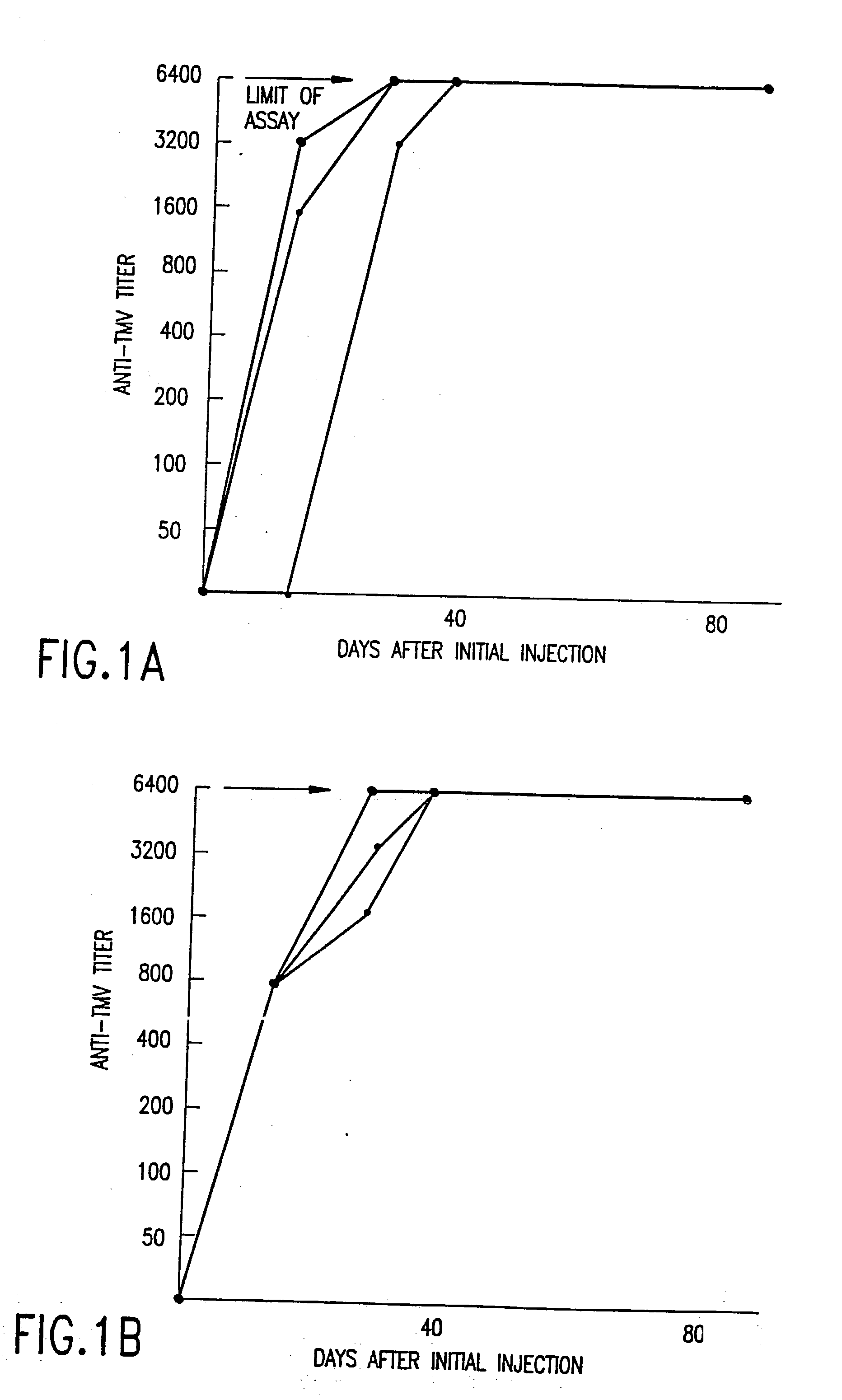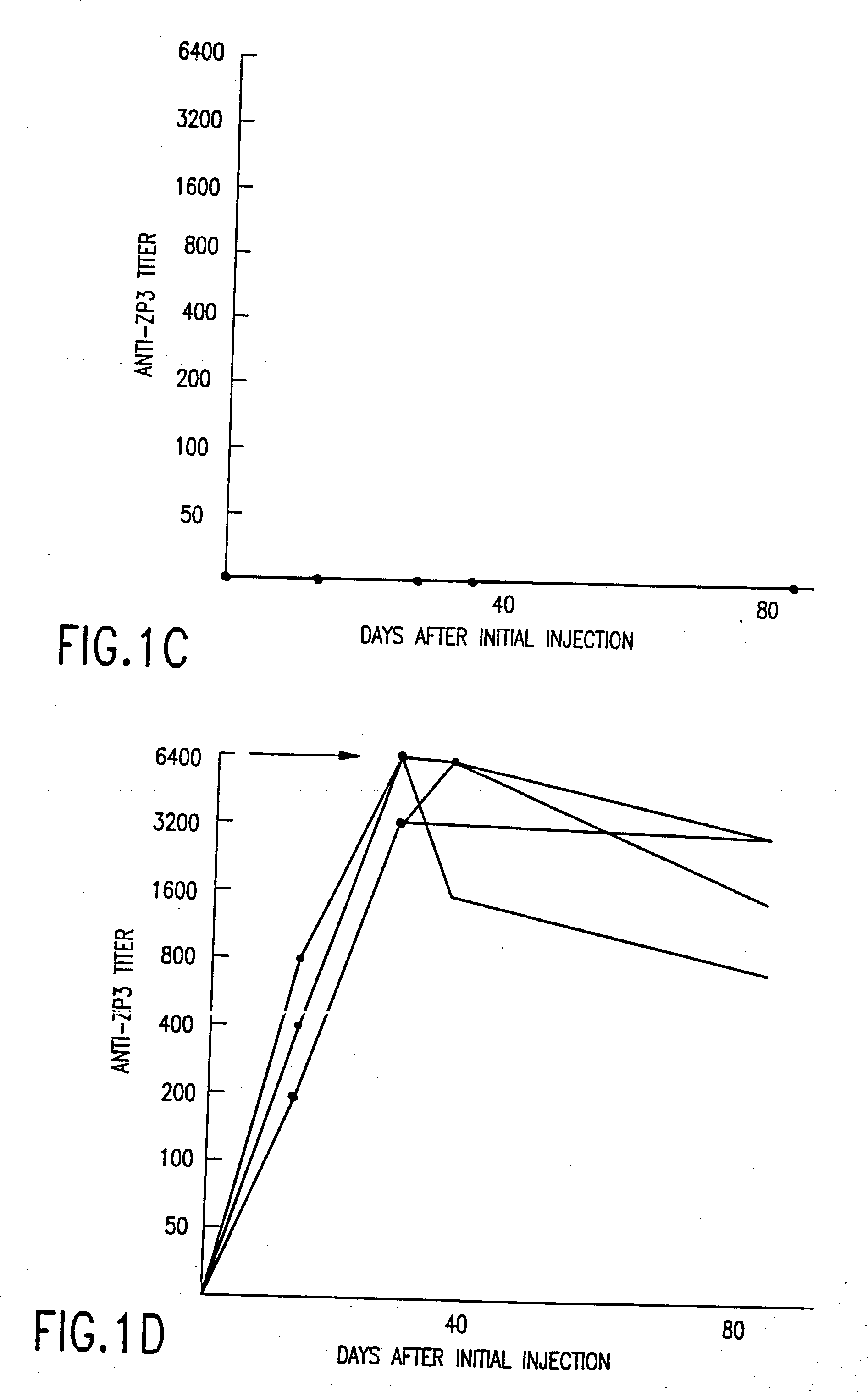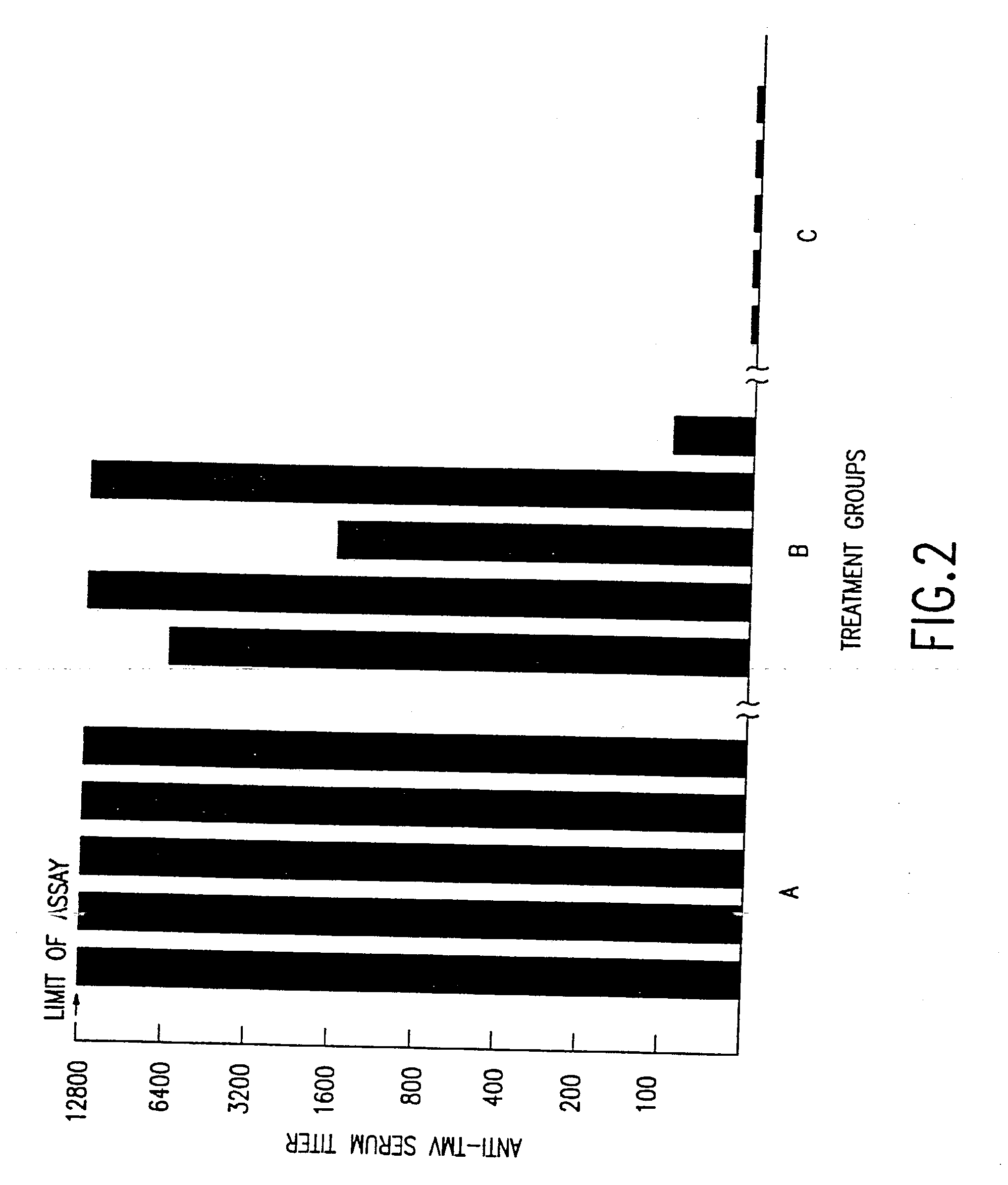Method for using tobacco mosaic virus to overproduce peptides and proteins
a technology of tmv and tmv, which is applied in the direction of peptides, peptide/protein ingredients, peptide sources, etc., can solve the problems of virus particles being assembled into virus particles, unable to work in a plant system, and tmv vectors developed using a cp gene modified to insert foreign genes usually fail to systemically express foreign genes
- Summary
- Abstract
- Description
- Claims
- Application Information
AI Technical Summary
Benefits of technology
Problems solved by technology
Method used
Image
Examples
example 2
Construction of Infectious Clones
[0098] A 270-base pair PstI-EcoRI restriction fragment corresponding to nucleotides 1-270 of the modified TMV sequence was subcloned into the vector pBluescript KS+ (Stratagene, San Diego, Calif.). Sequences in the polylinker between the T7 RNA promoter in the vector and TMV nucleotide number 1 were removed by oligonucleotide-directed deletion mutagenesis utilizing the oligonucleotide pdGTAATACGACTCACTATAGTATTTTTACAACAATTA (SEQ ID NO 9). This placed the T7 promoter region immediately adjacent to the 5' end of the TMV cDNA. The remainder of the TMV genome was reassembled downstream by introducing a SmaI-BamHI (nucleotides 256-3332) restriction fragment, and subsequent a BamHI-KpnI (nucleotides 3333-6396) restriction fragment using standard techniques (Sambrook, supra). Replacements of defective segments of the genome were made by exchanging SmaI-BamHI or BamHI-KpnI restriction gents with those of alternate cDNA clones.
[0099] To produce in vitro transc...
example 3
Isolation of Virion and Component RNAs
[0100] To 8 ml of cold nucleoprotein solution (3 to 7 mg / ml) in 1 mM sodium EDTA buffer was added 0.4 ml of 100 mg / ml SDS. The tube was transferred immediately to a boiling water bath and the contents were stirred until the solution reached 80.degree. C. The tube was transferred to ice water and stirring was continued until the solution temperature dropped below 40.degree. C. After the tube had remained 5 to 10 minutes more on ice, 0.16 ml of 0.4 M Tris, 0.04 M acetic acid was added, followed by 8 ml of liquid phenol that had been equilibrated with 0.05 M Tris, 0.004 M acetic acid. The phases were mixed by shaking for 2-3 minutes and separated by centrifugation. The aqueous phase was extracted a second and, sometimes, a third time. The RNA was precipitated by adding 0.8 ml of 2 M sodium acetate, 0.2 M acetic acid, and 16 ml of cold 95% ethanol. The insoluble material was recovered by centrifugation. The precipitate was washed once with 95% ethan...
example 4
In Vitro Transcription and Inoculation
[0101] Plasmids containing full-length modified TMV cDNA clones were linearized with KpnI, which restricts the plasmid at the 3' end of the TMV cDNA, blunted by removing the 3' overhang with Klenow polymerase, and used for the production of run-off transcripts. Transcription by T7 RNA polymerase (Promega, Madison, Wis.) used the reaction conditions as described by Nielsen and Shapiro (Nucleic Acids Res., 14:5936, 1986), except that the concentrations of ATP, CTP, and UTP were increased to 1 mM each and BSA was added to a final concentration of 100 .mu.g / ml. After incubation, 20 mM sodium phosphate buffer, pH 7.0, was added and the mixture inoculated directly onto leaves dusted with 330 grit carborundum (Fisher Scientific, Pittsburgh, Pa.). Immediately after inoculation, plants were rinsed with water and placed in growth chambers. Plants were observed daily for signs of infection (necrotic local lesions or systemic vein yellowing and mosaic). Acc...
PUM
| Property | Measurement | Unit |
|---|---|---|
| molecular mass | aaaaa | aaaaa |
| weight | aaaaa | aaaaa |
| temperature | aaaaa | aaaaa |
Abstract
Description
Claims
Application Information
 Login to View More
Login to View More - R&D
- Intellectual Property
- Life Sciences
- Materials
- Tech Scout
- Unparalleled Data Quality
- Higher Quality Content
- 60% Fewer Hallucinations
Browse by: Latest US Patents, China's latest patents, Technical Efficacy Thesaurus, Application Domain, Technology Topic, Popular Technical Reports.
© 2025 PatSnap. All rights reserved.Legal|Privacy policy|Modern Slavery Act Transparency Statement|Sitemap|About US| Contact US: help@patsnap.com



